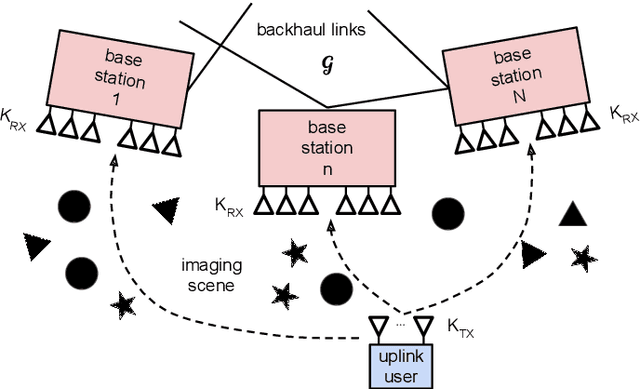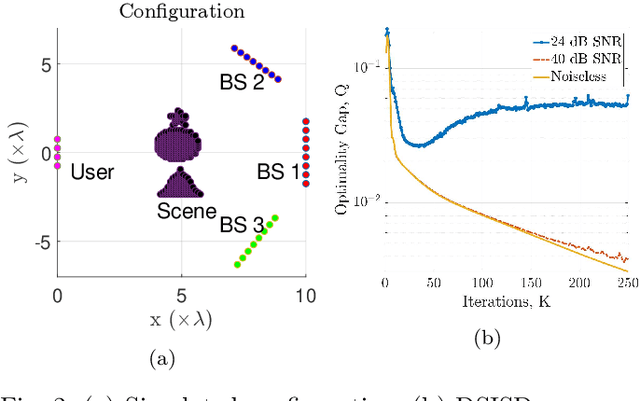Nishant Mehrotra
Zak-OTFS for Mutually Unbiased Sensing and Communication
Mar 30, 2025Abstract:Waveforms with ideal ambiguity functions are fundamental to integrated sensing and communication, to active sensing (radar), and to uplink multiple access. We describe a general method of constructing waveforms using the discrete Zak transform (DZT) to convert sequences of length $MN$ in the time domain to waveforms in the delay-Doppler (DD) domain, each of which is defined by an $M\times N$ quasi-periodic array. The DZT preserves inner products, and we show that phase coded waveforms used in radar (CAZAC sequences) determine noise-like waveforms in the DD domain, each with low Peak to Average Power Ratio. In a Zak-OTFS communication system, we show that these waveforms are mutually unbiased with respect to every carrier and use them to integrate sensing and communication as spread pilots. We view each waveform as a linear combination of Zak-OTFS carriers and show that the self-ambiguity function is supported on a discrete line in the integers modulo $MN$. The sidelobes are significantly lower than the original CAZAC sequence, and the advantage of discrete support is better localization/resolution in delay and Doppler compared with standard methods based on chirps or tones. We show that the absolute value of the cross-ambiguity function for pairs of waveforms in the same family is small and constant. This property makes the waveforms ideal preambles in the 2-step RACH protocol introduced in Release 15, 3GPP to enable grant-free multiple access. The characteristics of the cross-ambiguity function make it possible to simultaneously detect multiple preambles in the presence of mobility and delay spread.
Consensus ADMM-Based Distributed Simultaneous Imaging & Communication
Jun 20, 2022


Abstract:This paper takes the first steps toward enabling wireless networks to perform both imaging and communication in a distributed manner. We propose Distributed Simultaneous Imaging and Symbol Detection (DSISD), a provably convergent distributed simultaneous imaging and communication scheme based on the alternating direction method of multipliers. We show that DSISD achieves similar imaging and communication performance as centralized schemes, with order-wise reduction in computational complexity. We evaluate the performance of DSISD via 2.4 GHz Wi-Fi simulations.
 Add to Chrome
Add to Chrome Add to Firefox
Add to Firefox Add to Edge
Add to Edge